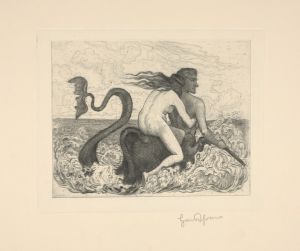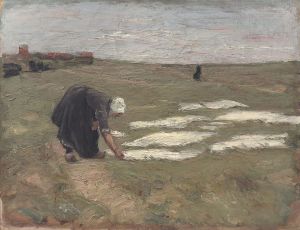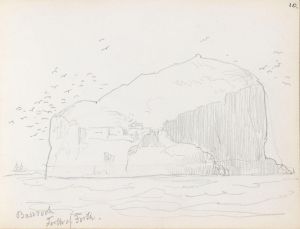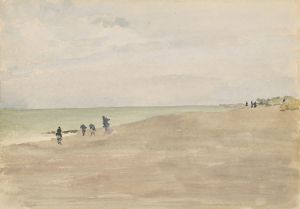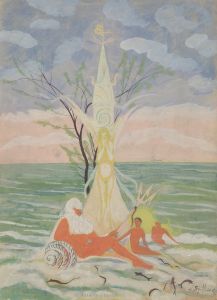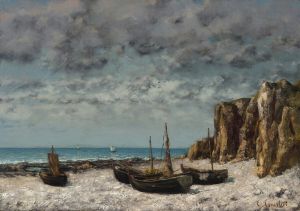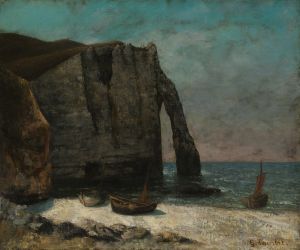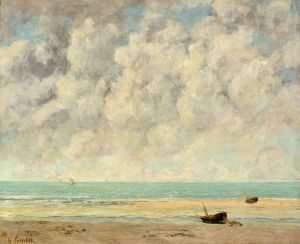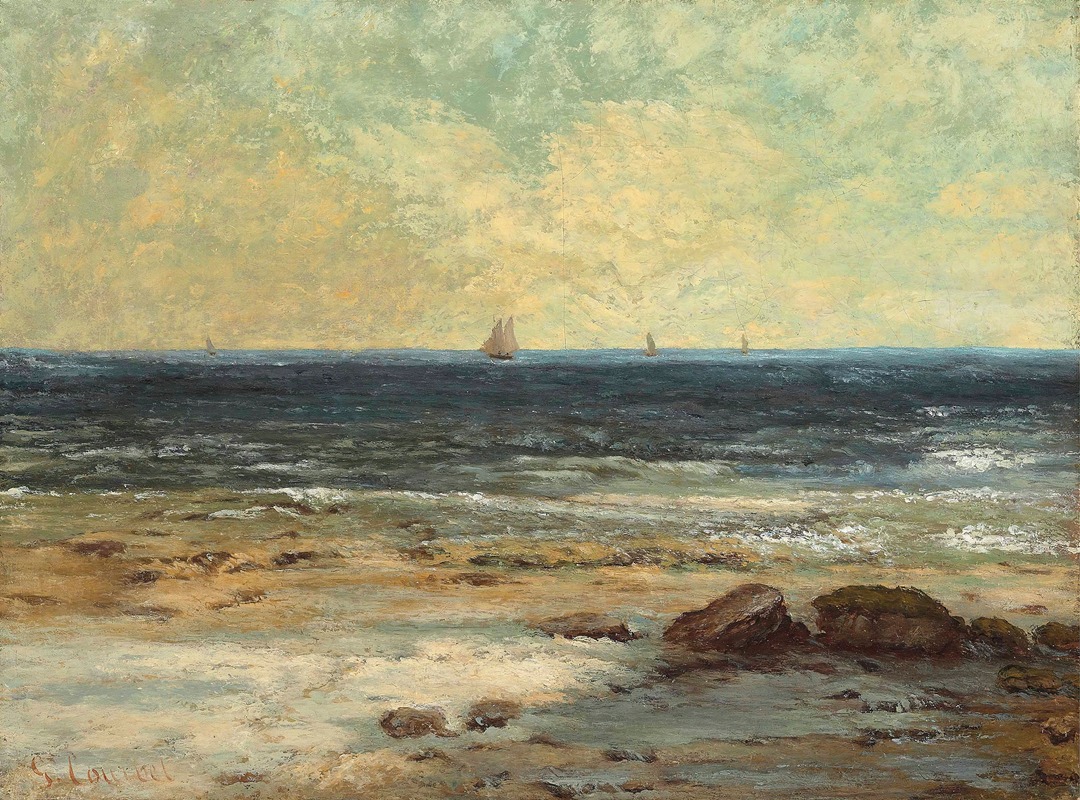
Bords de la Mer, Palavas
A hand-painted replica of Gustave Courbet’s masterpiece Bords de la Mer, Palavas, meticulously crafted by professional artists to capture the true essence of the original. Each piece is created with museum-quality canvas and rare mineral pigments, carefully painted by experienced artists with delicate brushstrokes and rich, layered colors to perfectly recreate the texture of the original artwork. Unlike machine-printed reproductions, this hand-painted version brings the painting to life, infused with the artist’s emotions and skill in every stroke. Whether for personal collection or home decoration, it instantly elevates the artistic atmosphere of any space.
"Bords de la Mer, Palavas" (translated as "The Sea Shore, Palavas") is a painting by the renowned French artist Gustave Courbet. Created in 1854, this work is a significant example of Courbet's landscape painting, showcasing his dedication to realism and his ability to capture the natural beauty of the French coastline.
Gustave Courbet was a leading figure in the Realist movement, which emerged in the mid-19th century as a reaction against the idealized subjects of Romanticism. Courbet's works often depicted everyday scenes and ordinary people, emphasizing the importance of representing the world as it is. "Bords de la Mer, Palavas" is a testament to this philosophy, as it portrays a serene and unembellished view of the sea.
The painting depicts the beach at Palavas-les-Flots, a small coastal town near Montpellier in the south of France. Courbet visited this area during his travels and was inspired by its natural beauty. The composition of the painting is simple yet effective, with a vast expanse of sky dominating the upper portion of the canvas and the calm sea stretching out towards the horizon. The beach itself is sparsely populated, with a few figures visible in the distance, adding a sense of scale and tranquility to the scene.
Courbet's technique in "Bords de la Mer, Palavas" is characterized by his use of a muted color palette and loose, expressive brushstrokes. The sky is rendered in soft blues and grays, with subtle variations in tone that suggest the changing light of the day. The sea is depicted with a similar attention to detail, its surface gently rippling under the influence of a light breeze. The sandy beach is painted in warm, earthy tones, providing a contrast to the cooler colors of the sky and sea.
One of the most striking features of the painting is the figure of a man standing on the beach, waving a red flag. This figure is believed to be a self-portrait of Courbet, symbolizing his presence in the landscape and his connection to the natural world. The red flag adds a focal point to the composition, drawing the viewer's eye and adding a touch of color to the otherwise subdued palette.
"Bords de la Mer, Palavas" is an excellent example of Courbet's ability to convey the beauty and tranquility of the natural world through his art. The painting reflects his commitment to realism and his belief in the importance of depicting the world truthfully. Today, this work is held in high regard and is part of the collection at the Musée Fabre in Montpellier, France.
Courbet's influence on the art world was profound, and his works continue to be celebrated for their innovative approach and their impact on the development of modern art. "Bords de la Mer, Palavas" remains a testament to his skill as a painter and his dedication to capturing the essence of the natural world.





